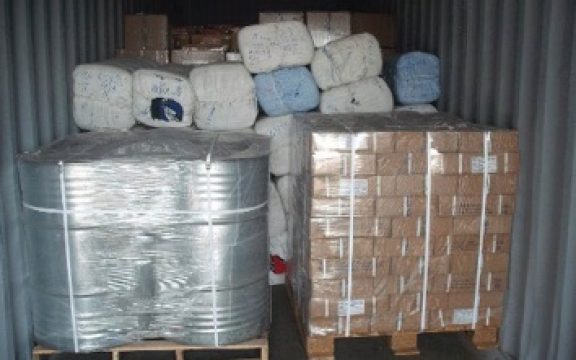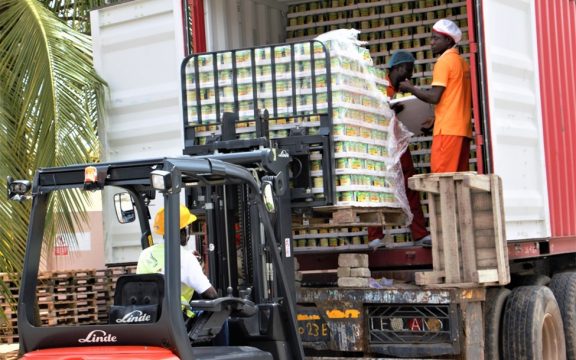Introduction
It appears that Ghana’s export sector is making significant gains post COVID-19. This is evident in a report released by the Ghana Export Promotion Authority (GEPA) on the analysis of Non-Traditional Export (NTEs) statistics for 2021.
Per the report, earnings from non-traditional exports increased from $2.84 billion in 2020 to $3.33 billion in 2021, representing an increase of 17%; the highest performance over the past five (5) years. Between 2017 and 2021, Ghana’s Non-Traditional Exports (NTEs) have grown at an annual average rate of 7.07%, contributing to up to 22.62% of the nation’s total merchandise exports in 2021. This increase reflects a rebound of the country’s export sector from the effects of COVID-19, which disrupted the global supply chain in 2020.
 Pineapples, Mangoes and Yam; How Did They Perform?
Pineapples, Mangoes and Yam; How Did They Perform?
The Import-Export Act of 1995 (Act 503) classifies traditional exports as cocoa beans, logs and lumber, unprocessed gold and other minerals and electricity. Thus, Non-Traditional Exports (NTEs) are defined as all products other than cocoa beans, logs and lumber, unprocessed gold, and other minerals and electricity. These include; pineapples, mangoes and yam, all of which together generated a total of US$141 million from exports for Ghana in 2021.
- Pineapples
Ghana’s performance on the international market regarding the export of pineapples seems to be on a decline. The West African country ranked 11th in the order of countries that exported Pineapples in 2021. Data from the Ghana Export Promotion Authority (GEPA) reveals that Ghana’s Pineapple exports to the world registered a decline of 6% in value in 2021 compared to earnings in 2020. The exports yielded US$29m in 2021, a decline of US$6m and US$2m in value of Pineapple exports in 2019 and 2020 respectively. A large chunk of the pineapple exports from Ghana went to Europe (85.8%). From the perspective of Africa, Cote d’Ivoire ranked 1st in terms of the countries with the highest export value of pineapples to the world, followed by Ghana and Kenya.
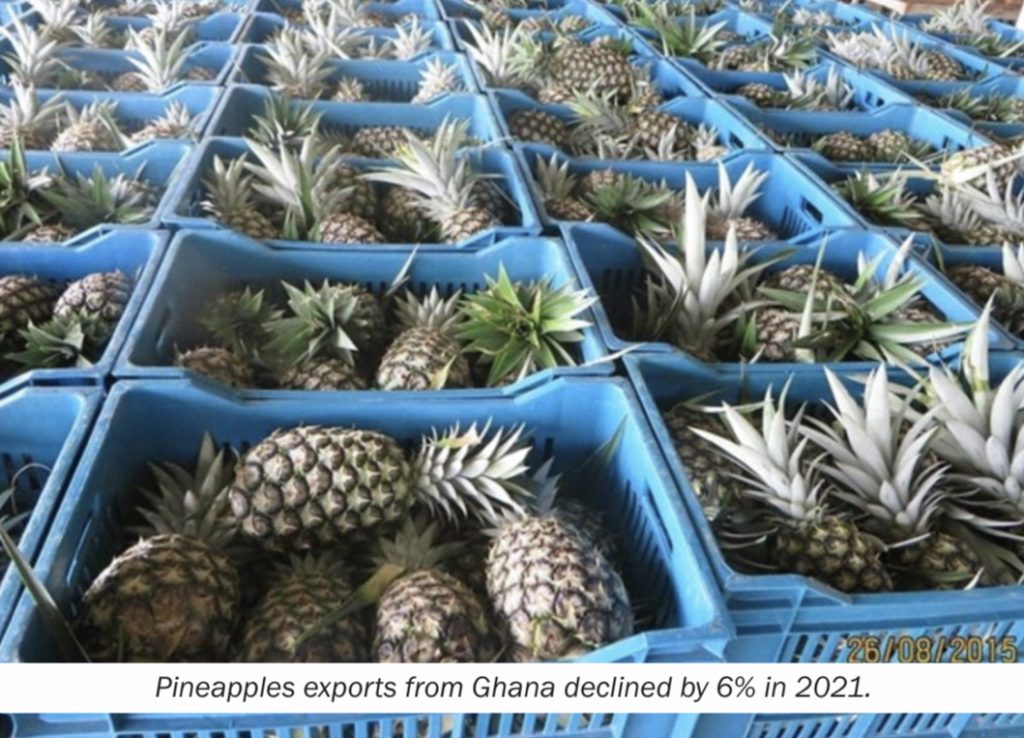 Cote d’Ivoire and Ghana have contributed about 68% of the total value of Pineapples exported from Africa, a trend the two countries have managed to maintain over the past few years. Similarly, Ghana and Cote d’Ivoire contributed more than 97% of the total value of pineapple exports from West Africa, indicating a dominant position in Africa for the two neighboring countries despite the decline in Ghana’s export value.
Cote d’Ivoire and Ghana have contributed about 68% of the total value of Pineapples exported from Africa, a trend the two countries have managed to maintain over the past few years. Similarly, Ghana and Cote d’Ivoire contributed more than 97% of the total value of pineapple exports from West Africa, indicating a dominant position in Africa for the two neighboring countries despite the decline in Ghana’s export value.
- Mangoes
Unlike Pineapples which witnessed a decline, the export of mangoes increased by 28% between 2020 and 2021. The total value of mango exports in 2021 stood at US$64.6 million compared to US$50.3 million in 2020. This was reflected in the global demand for Mangoes which saw a steady growth from US$2.91billion in 2017 to US$4.14billion in 2021. Ghana ranked 11th in the order of countries that exported mangoes to the world in 2021. The main destinations for mangoes exported from Ghana included; Germany (US$ 9.9m), Switzerland (US$ 6.1m), Belgium (US$ 2.7m) and France (US$ 1.2m). Whilst UK’s imports of Mangoes from across the globe grew by 5% between 2017-2021, Ghana’s exports to UK on the other hand grew by 6% during the same period.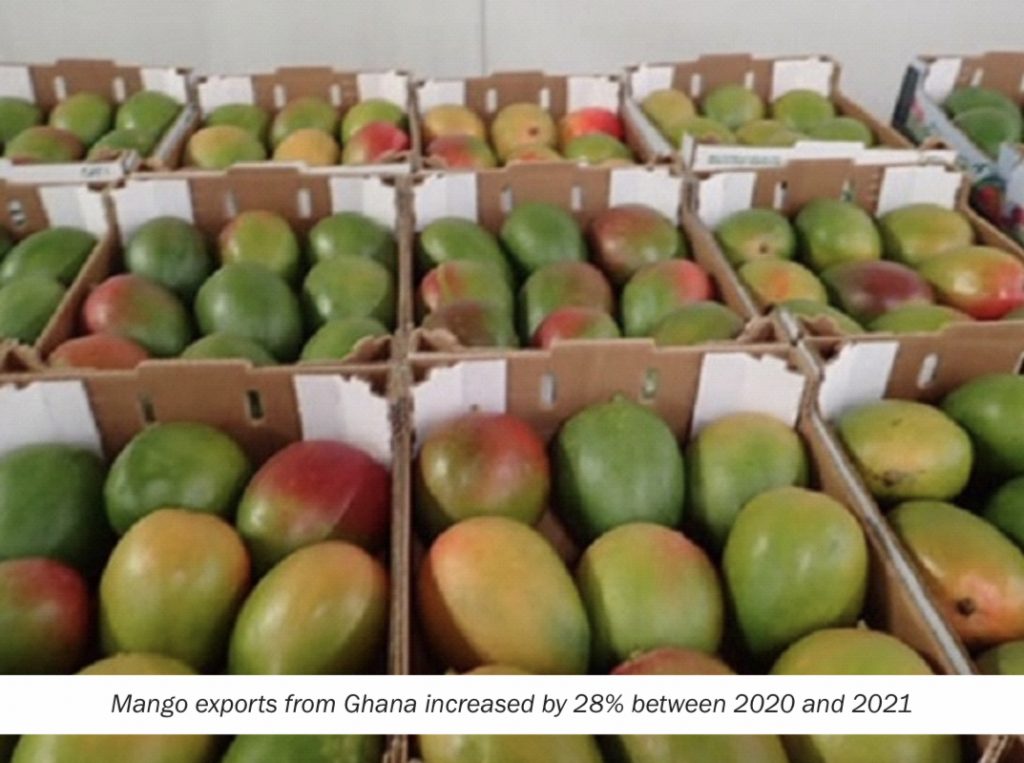
- Yam
Ghana made significant gains in the area of yam export in recent years, overtaking Jamaica to become the world’s biggest exporter of yam. The country’s export value of yams has been on the rise since 2018 from US$ 38.5 million to US$ 48.2 million in 2021. Ghana recorded a world share of 24.1% with an annual growth rate of 14% between 2020-2021, as well as an average growth rate of 9% from 2017-2021. The value of yam exports from Ghana in 2021 stood at US$ 48.2 million, making it the largest exporter of yam around the world during the period under review. USA was the biggest market for Ghana’s yams in 2021 with a market share of 21.9%.
Jamaica ranks 2nd in world export of yams. Global exports of yams were valued at US$ 200 million at a growth rate of 4% in 2021, with an average growth rate of 6% between 2017 and 2021. The top global exporters of yams were Ghana (US$ 48 million), Jamaica (US$ 39 million), United States of America (US$ 22 million), Japan (US$ 21 million) and China (US$ 20 million).
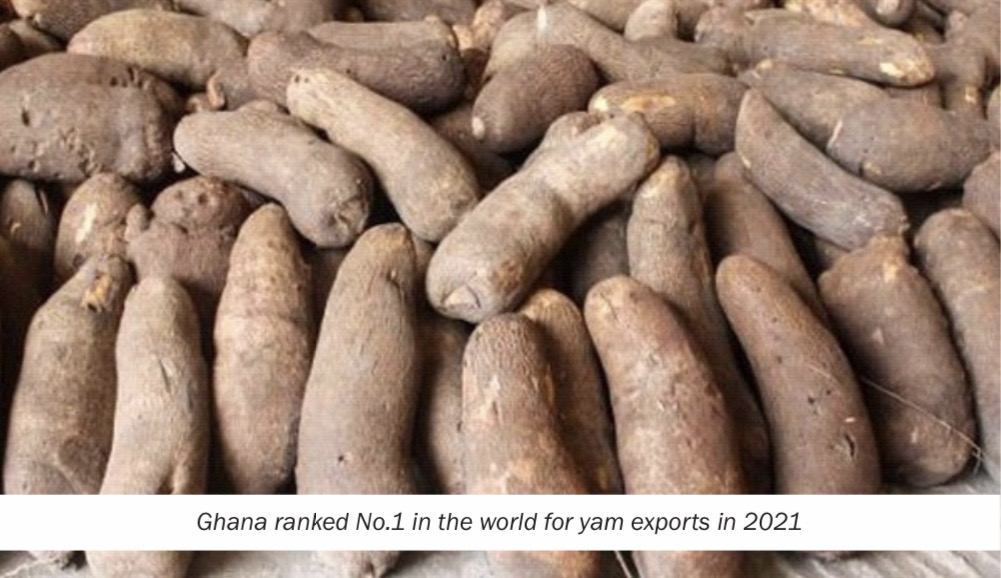 RECOMMENDATIONS
RECOMMENDATIONS
The CEO of the Ghana Exim Bank Mr. Lawrence Agyinsam has announced that the bank was ready to contribute $10 million for the improvement of the production and exportation of yam. USAID has also committed to invest up to $25 million for the same purpose.
The NTE sector needs more of such investments to improve revenue generation. It is regarded as one of the surest ways to attain the government’s target to raise at least US$ 25 billion from NTEs by 2029.
Exporters and potential exporters, product associations, financial institutions, senior and middle level Managers of export-oriented firms and SMEs as well as stakeholders in the NTEs value chain should be encouraged to enroll in the GEPA Export School as this would help to build the capacity of exporters at various stages of the value chain to enable them to compete favorably globally.





